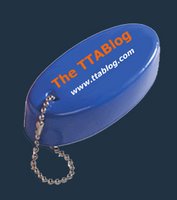TTAB Affirms Refusal of ENDURELITE in view of ENDUROLETE for Supplements, Rejecting Strategic Partners Argument
The Board affirmed a refusal to register the mark ENDURELITE, finding confusion likely with the registered mark ENDUROLETE, both for dietary and nutritional supplements. The marks are "extremely similar," the goods identical in-part, and the channels of trade and classes of consumers for those goods are presumably identical. Applicant argued that, under Strategic Partners, its ownership of a registration for the mark ENDURELITE FUELING FAST & Design (shown immediately below) justifies registration of the standard character mark. The Board disagreed. In re Endurelite Supplements, LLC, Serial No. 90708132 (November 15, 2024) [not precedential] (Opinion by Judge Thomas W. Wellington).
Examining Attorney Kevin Flebbe and Applicant argued over the applicability of In re Strategic Partners, Inc., 102 USPQ2d 1397 (TTAB 2012). [TTABlogged here]. There the applicant sought to register the mark ANYWEAR in slightly stylized form, for footwear, and its ownership of a registration for ANYWEARS in standard character form was enough to sidestep a likelihood of confusion refusal.
Here, as in Strategic Partners, the prior registration was more than five years old and therefore was "not subject to attack by the owner of the cited registration on a claim of priority and likelihood of confusion." Furthermore, the identical word ENDURELITE appears in both marks.
On the other hand, unlike in Strategic Partners, the marks are not "substantially similar" since the prior mark includes a design and additional wording. Also, Applicant here is seeking to register the mark ENDURELITE for goods that include “dietary and nutritional supplements,” which is "a significant expansion upon the more specifically-described nutritional supplements listed in Applicant’s existing prior registration." In Strategic Partners, the Board noted, the goods covered by both the applicant’s existing prior registration and in its application were identical: "footwear."
In view of the above, we find the existence of Applicant’s prior registration only weighs slightly in favor of finding confusion unlikely. We hasten to add, however, that there are significant differences between the circumstances present in this appeal with those in Strategic Partners, and we certainly do not find ourselves in the “unique position” where the thirteenth DuPont factor “outweighs the other [factors].” Id. at 1399.
And so, the Board affirmed the refusal to register.
Read comments and post your comment here.
TTABlogger comment: Well, that Hail Mary pass failed to connect.
Text Copyright John L. Welch 2024.
























